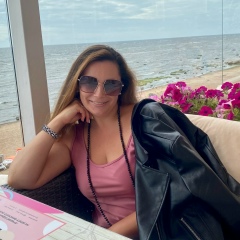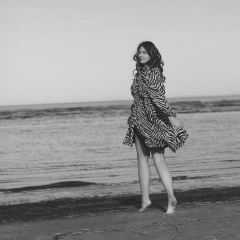Мыс Доброй Надежды расположен на самом юге африканского континента, на Капском полуострове в ЮАР. Часто его ошибочно называют самой южной точкой Африки. На самом деле, самая южная точка — мыс Игольный (Агулкас), а мыс Доброй Надежды — самое юго-западное место.
Самым первым названием этого неприветливого для мореплавателей места стало Мыс Бурь — Cabo Tormentoso. Так его назвал португалец Бартоломео Диас в 1487 году, когда его корабль достиг мыса во время жестоких бурь. Мореплаватели искали путь в Индию, но Мыс Бурь не оправдал их надежд, и вскоре они вынуждены были повернуть назад.
Но позднее португальский король Иоанн II переименовал мыс в Мыс Доброй Надежды — путь в Индию все-таки оказался правильным. Первым европейцем, попавшим в Индийский океан, миновав этот мыс, стал Васко да Гама в 1497 г.
У моряков Мыс Доброй Надежды, несмотря на свое оптимистичное название, всегда пользовался дурной славой.
Здесь всегда дули сильные ветры, нередко приводящие к штормам, сильные течения сносили корабли на скалы, все горы на побережье были похожи друг на друга как две капли воды и совсем не позволяли ориентироваться. Моряки, следуя из Индии, часто ошибались в своих расчетах и поворачивали раньше времени, попадая вместо Атлантического океана в Обманный залив и утыкаясь в берег. Нередко такое плаванье заканчивалось для них трагически.
Но идея строить тут маяк оформилась только в 1853 году, когда представители местных властей при инспекции береговой линии неожиданно увидели в море айсберги — а они рядом с Мысом явление не редкое.
Сказано — сделано, и маяк построили. Вот только маяк, находящийся на вершине мыса, на высоте 271 метр — не работающий. Его ввели в эксплуатацию, как принято теперь говорить, в мае 1860 года, но, увы, никакой пользы мореплавателям он не приносил, по причине того, что вершина мыса вечером и ночью полностью укутана облаками, и свет самого мощного по тем временам маяка в мире совершенно бесполезен для мореплавателей.
Сколько кораблей потонуло по причине такого подхода — достоверно неизвестно, маяк благополучно прослужил более пятидесяти лет, так как власти категорически не хотели признавать неправоту инженеров. Даже после того, как новенький пароход «Какапу» так ошибся с курсом, что оказался на пляже, полностью на суше — во всем обвинили пьяного капитана. Кто его знает, может, капитан действительно был нетрезв, но более работоспособным маяк это не делало.
Принятие решения назрело только в 1911 году, когда португальский лайнер «Лузитания» напоролся на риф. Только благодаря действиям смотрителя маяка, который выбежал на берег с фонарем, удалось спасти практически всех пассажиров лайнера — шлюпки с пострадавшими едва не налетели на невидимый в темноте скалистый берег.
Только после этого власти решились построить новый маяк — всего на 88-метровой высоте, и видимый только на 40 километров. Зато видимый.
Но большой популярностью пользуется старый маяк, о бездействии которого большинство и не подозревают. На маяке построено несколько магазинов, ресторан и фуникулер «Летучий Голландец».
Почему «Летучий Голландец»? А потому, что именно тут чаще всего видели таинственный корабль, капитан которого в 1680 году продал душу дьяволу за возможность выбраться из бури. Корабль этот нередко видели те, кому в скором времени суждено несчастье.
В 1881 году эту возможность счастливо проспал будущий король Великобритании Георг V, в то время как все остальные члены команды его судна видели несчастливый корабль. История, правда, умалчивает, случилось ли потом что-нибудь ужасное с невезучими моряками.
До сих пор описываются частые случаи появления корабля-призрака на горизонте. По свидетельствам очевидцев, он выглядит как потрепанное жизнью и непогодой парусное судно, растворяющееся при приближении к берегу. Последнее документальное свидетельство о «Летучем Голландце» появилось в бортжурнале немецкой подводной лодки в 1942 году.
На мысе Доброй Надежды есть не только маяк. Здесь расположен заповедник, носящий то же название. Он содержит несколько тысяч растений — в основном, низкие плотные кустарники. В заповеднике обитает много редких животных — антилоп, страусов, зебр, бабуинов. Рыбу тут можно ловить, и многие увлекаются любительской рыбалкой с лодок. Особой популярностью пользуется местная рыба снук, ведь в момент вылова она сбрасывает всю чешую! Почти метровая рыба весом 4-5 килограмм, и уже почищенная.
А самые интересные животные — это пингвины. В Африку пингвины добрались из Антарктиды, и им тут понравилось — тепло и много пищи. Со временем птицы разведали, что кроме побережья тут есть и еще более интересная вещь — человеческие поселения. Пингвины ринулись в дома местных жителей и со временем превратились в настоящее бедствие. Большими усилиями люди вытеснили их в особую зону на пляже, где птицы с тех пор и обитают.
Самым первым названием этого неприветливого для мореплавателей места стало Мыс Бурь — Cabo Tormentoso. Так его назвал португалец Бартоломео Диас в 1487 году, когда его корабль достиг мыса во время жестоких бурь. Мореплаватели искали путь в Индию, но Мыс Бурь не оправдал их надежд, и вскоре они вынуждены были повернуть назад.
Но позднее португальский король Иоанн II переименовал мыс в Мыс Доброй Надежды — путь в Индию все-таки оказался правильным. Первым европейцем, попавшим в Индийский океан, миновав этот мыс, стал Васко да Гама в 1497 г.
У моряков Мыс Доброй Надежды, несмотря на свое оптимистичное название, всегда пользовался дурной славой.
Здесь всегда дули сильные ветры, нередко приводящие к штормам, сильные течения сносили корабли на скалы, все горы на побережье были похожи друг на друга как две капли воды и совсем не позволяли ориентироваться. Моряки, следуя из Индии, часто ошибались в своих расчетах и поворачивали раньше времени, попадая вместо Атлантического океана в Обманный залив и утыкаясь в берег. Нередко такое плаванье заканчивалось для них трагически.
Но идея строить тут маяк оформилась только в 1853 году, когда представители местных властей при инспекции береговой линии неожиданно увидели в море айсберги — а они рядом с Мысом явление не редкое.
Сказано — сделано, и маяк построили. Вот только маяк, находящийся на вершине мыса, на высоте 271 метр — не работающий. Его ввели в эксплуатацию, как принято теперь говорить, в мае 1860 года, но, увы, никакой пользы мореплавателям он не приносил, по причине того, что вершина мыса вечером и ночью полностью укутана облаками, и свет самого мощного по тем временам маяка в мире совершенно бесполезен для мореплавателей.
Сколько кораблей потонуло по причине такого подхода — достоверно неизвестно, маяк благополучно прослужил более пятидесяти лет, так как власти категорически не хотели признавать неправоту инженеров. Даже после того, как новенький пароход «Какапу» так ошибся с курсом, что оказался на пляже, полностью на суше — во всем обвинили пьяного капитана. Кто его знает, может, капитан действительно был нетрезв, но более работоспособным маяк это не делало.
Принятие решения назрело только в 1911 году, когда португальский лайнер «Лузитания» напоролся на риф. Только благодаря действиям смотрителя маяка, который выбежал на берег с фонарем, удалось спасти практически всех пассажиров лайнера — шлюпки с пострадавшими едва не налетели на невидимый в темноте скалистый берег.
Только после этого власти решились построить новый маяк — всего на 88-метровой высоте, и видимый только на 40 километров. Зато видимый.
Но большой популярностью пользуется старый маяк, о бездействии которого большинство и не подозревают. На маяке построено несколько магазинов, ресторан и фуникулер «Летучий Голландец».
Почему «Летучий Голландец»? А потому, что именно тут чаще всего видели таинственный корабль, капитан которого в 1680 году продал душу дьяволу за возможность выбраться из бури. Корабль этот нередко видели те, кому в скором времени суждено несчастье.
В 1881 году эту возможность счастливо проспал будущий король Великобритании Георг V, в то время как все остальные члены команды его судна видели несчастливый корабль. История, правда, умалчивает, случилось ли потом что-нибудь ужасное с невезучими моряками.
До сих пор описываются частые случаи появления корабля-призрака на горизонте. По свидетельствам очевидцев, он выглядит как потрепанное жизнью и непогодой парусное судно, растворяющееся при приближении к берегу. Последнее документальное свидетельство о «Летучем Голландце» появилось в бортжурнале немецкой подводной лодки в 1942 году.
На мысе Доброй Надежды есть не только маяк. Здесь расположен заповедник, носящий то же название. Он содержит несколько тысяч растений — в основном, низкие плотные кустарники. В заповеднике обитает много редких животных — антилоп, страусов, зебр, бабуинов. Рыбу тут можно ловить, и многие увлекаются любительской рыбалкой с лодок. Особой популярностью пользуется местная рыба снук, ведь в момент вылова она сбрасывает всю чешую! Почти метровая рыба весом 4-5 килограмм, и уже почищенная.
А самые интересные животные — это пингвины. В Африку пингвины добрались из Антарктиды, и им тут понравилось — тепло и много пищи. Со временем птицы разведали, что кроме побережья тут есть и еще более интересная вещь — человеческие поселения. Пингвины ринулись в дома местных жителей и со временем превратились в настоящее бедствие. Большими усилиями люди вытеснили их в особую зону на пляже, где птицы с тех пор и обитают.
The Cape of Good Hope is located in the very south of the African continent, on the Cape Peninsula in South Africa. Often it is mistakenly called the southernmost point of Africa. In fact, the southernmost point is Cape Agulny (Agulkas), and the Cape of Good Hope is the most south-western place.
The very first name of this place inhospitable for mariners was the Cape of Storms - Cabo Tormentoso. So he was called by the Portuguese Bartolomeo Diaz in 1487, when his ship reached the headland during the cruel storms. Seafarers were looking for a way to India, but the Cape of Storms did not meet their expectations, and soon they were forced to turn back.
But later the Portuguese king John II renamed the cape to the Cape of Good Hope - the road to India nevertheless turned out to be the right one. The first European to enter the Indian Ocean, passing this cape, became Vasco da Gama in 1497.
The sailors of the Cape of Good Hope, despite their optimistic name, have always enjoyed notoriety.
Strong winds always blew here, often leading to storms, strong currents wrecked ships on rocks, all the mountains on the coast looked like two drops of water and did not allow to navigate at all. Sailors, following from India, were often mistaken in their calculations and turned ahead of time, getting instead of the Atlantic Ocean into the Bay of Damn and clinging to the shore. Such swimming often ended tragically for them.
But the idea to build a lighthouse here took shape only in 1853, when representatives of local authorities during the inspection of the coastline suddenly saw icebergs in the sea - and they are not a rare phenomenon near the Cape.
It is said - done, and the lighthouse was built. Here are just the lighthouse, located on the top of the cape, at a height of 271 meters - not working. He was commissioned, as is customary to say now, in May 1860, but, alas, he did not bring any benefit to the mariners, due to the fact that the top of the cape was completely wrapped in the evening and at night with clouds, and the light of the most powerful lighthouse in those times completely useless for seafarers.
How many ships sank due to this approach — it is not known for certain; the lighthouse successfully served for more than fifty years, since the authorities categorically did not want to admit the engineers were wrong. Even after the brand-new steamer Kakapu was so wrong with the course that he was on the beach, completely on land - they blamed the drunken captain for everything. Who knows, maybe the captain was really drunk, but the beacon did not make it more workable.
Decision making was overdue only in 1911, when the Portuguese liner "Lusitania" ran into a reef. Only thanks to the actions of the caretaker of the lighthouse, who ran ashore with a lantern, it was possible to save almost all the passengers of the ship - the boats with the victims almost ran into the rocky shore that was invisible in the dark.
Only after this, the authorities decided to build a new lighthouse - only at 88-meter height, and visible only for 40 kilometers. But visible.
But the old lighthouse is very popular, the omission of which the majority do not suspect. At the lighthouse built several shops, a restaurant and a funicular "Flying Dutchman."
Why is the “Flying Dutchman”? And because it was here that the mysterious ship was most often seen, whose captain in 1680 sold his soul to the devil for the opportunity to get out of the storm. This ship was often seen by those who would soon be in misfortune.
In 1881, this opportunity was happily overtaken by the future King of Great Britain George V, while all the other members of the crew of his vessel saw an unlucky ship. The story, however, is silent about whether something terrible happened to unlucky sailors.
The frequent occurrences of the ghost ship on the horizon are still described. According to eyewitnesses, he looks like a sailboat battered by life and bad weather, dissolving when approaching the coast. The latest documentary evidence of the Flying Dutchman appeared in the German submarine's logbook in 1942.
There is not only a lighthouse on Cape of Good Hope. Here is a reserve, bearing the same name. It contains several thousand plants - mostly low dense shrubs. The reserve is home to many rare animals - antelopes, ostriches, zebras, baboons. Fish can be caught here, and many people enjoy hobby fishing from boats. The local snook fish is especially popular, because at the time of the catch it drops all the scales! Almost meter fish weighing 4-5 kilograms, and already cleaned.
And the most interesting animals are penguins. Penguins arrived in Africa from Antarctica, and they liked it here - warm and plenty of food. Over time, the birds have discovered that besides the coast there is an even more interesting thing - human settlements. Penguins rushed into the homes of local residents and eventually turned into a real disaster. With great effort, people forced them into a special area on the beach, where birds have since been inhabited.
The very first name of this place inhospitable for mariners was the Cape of Storms - Cabo Tormentoso. So he was called by the Portuguese Bartolomeo Diaz in 1487, when his ship reached the headland during the cruel storms. Seafarers were looking for a way to India, but the Cape of Storms did not meet their expectations, and soon they were forced to turn back.
But later the Portuguese king John II renamed the cape to the Cape of Good Hope - the road to India nevertheless turned out to be the right one. The first European to enter the Indian Ocean, passing this cape, became Vasco da Gama in 1497.
The sailors of the Cape of Good Hope, despite their optimistic name, have always enjoyed notoriety.
Strong winds always blew here, often leading to storms, strong currents wrecked ships on rocks, all the mountains on the coast looked like two drops of water and did not allow to navigate at all. Sailors, following from India, were often mistaken in their calculations and turned ahead of time, getting instead of the Atlantic Ocean into the Bay of Damn and clinging to the shore. Such swimming often ended tragically for them.
But the idea to build a lighthouse here took shape only in 1853, when representatives of local authorities during the inspection of the coastline suddenly saw icebergs in the sea - and they are not a rare phenomenon near the Cape.
It is said - done, and the lighthouse was built. Here are just the lighthouse, located on the top of the cape, at a height of 271 meters - not working. He was commissioned, as is customary to say now, in May 1860, but, alas, he did not bring any benefit to the mariners, due to the fact that the top of the cape was completely wrapped in the evening and at night with clouds, and the light of the most powerful lighthouse in those times completely useless for seafarers.
How many ships sank due to this approach — it is not known for certain; the lighthouse successfully served for more than fifty years, since the authorities categorically did not want to admit the engineers were wrong. Even after the brand-new steamer Kakapu was so wrong with the course that he was on the beach, completely on land - they blamed the drunken captain for everything. Who knows, maybe the captain was really drunk, but the beacon did not make it more workable.
Decision making was overdue only in 1911, when the Portuguese liner "Lusitania" ran into a reef. Only thanks to the actions of the caretaker of the lighthouse, who ran ashore with a lantern, it was possible to save almost all the passengers of the ship - the boats with the victims almost ran into the rocky shore that was invisible in the dark.
Only after this, the authorities decided to build a new lighthouse - only at 88-meter height, and visible only for 40 kilometers. But visible.
But the old lighthouse is very popular, the omission of which the majority do not suspect. At the lighthouse built several shops, a restaurant and a funicular "Flying Dutchman."
Why is the “Flying Dutchman”? And because it was here that the mysterious ship was most often seen, whose captain in 1680 sold his soul to the devil for the opportunity to get out of the storm. This ship was often seen by those who would soon be in misfortune.
In 1881, this opportunity was happily overtaken by the future King of Great Britain George V, while all the other members of the crew of his vessel saw an unlucky ship. The story, however, is silent about whether something terrible happened to unlucky sailors.
The frequent occurrences of the ghost ship on the horizon are still described. According to eyewitnesses, he looks like a sailboat battered by life and bad weather, dissolving when approaching the coast. The latest documentary evidence of the Flying Dutchman appeared in the German submarine's logbook in 1942.
There is not only a lighthouse on Cape of Good Hope. Here is a reserve, bearing the same name. It contains several thousand plants - mostly low dense shrubs. The reserve is home to many rare animals - antelopes, ostriches, zebras, baboons. Fish can be caught here, and many people enjoy hobby fishing from boats. The local snook fish is especially popular, because at the time of the catch it drops all the scales! Almost meter fish weighing 4-5 kilograms, and already cleaned.
And the most interesting animals are penguins. Penguins arrived in Africa from Antarctica, and they liked it here - warm and plenty of food. Over time, the birds have discovered that besides the coast there is an even more interesting thing - human settlements. Penguins rushed into the homes of local residents and eventually turned into a real disaster. With great effort, people forced them into a special area on the beach, where birds have since been inhabited.


У записи 6 лайков,
0 репостов.
0 репостов.
Эту запись оставил(а) на своей стене Яна Смирнова


























